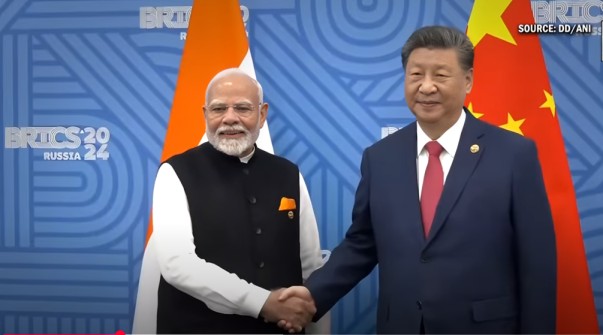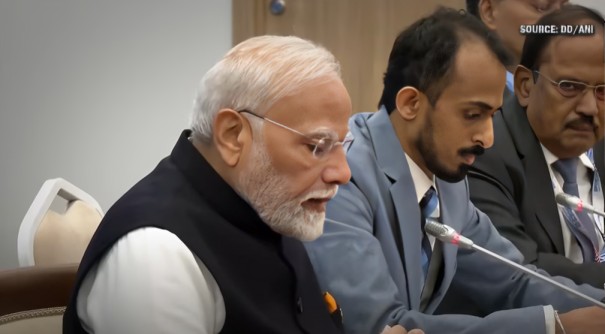(India Russia US relations): In a rapidly shifting geopolitical landscape, few nations walk the diplomatic tightrope as deftly as India. A country with a long history of strategic autonomy, India continues to maintain a delicate balance between its historical friendship with Russia and its expanding defense and strategic ties with the United States. As global alliances shift and new power equations emerge, New Delhi’s approach reflects pragmatism, strategic foresight, and a commitment to its own national interest.
The Legacy of India-Russia Ties
India’s relationship with Russia dates back to the Cold War era when the Soviet Union became one of India’s most reliable allies. While much of the West leaned toward Pakistan during critical geopolitical junctures, the USSR stood by India in its most trying times — including during the 1971 Bangladesh Liberation War. This bond, forged through shared strategic and defense goals, laid the foundation for a partnership that has stood the test of time.
Even after the collapse of the Soviet Union, India maintained warm relations with Russia. The two countries have collaborated on numerous defense, energy, and space projects over the decades. Russia remains a key defense supplier, accounting for a significant portion of India’s military imports. From fighter jets like the Sukhoi Su-30 MKI to tanks, submarines, and the S-400 air defense system, Russia has played a crucial role in building India’s defense capabilities.
More recently, both nations have diversified their engagement. Beyond defense, they have invested in energy cooperation (particularly in nuclear and oil), science and technology, space collaboration, and trade in sectors like diamonds and fertilizers. India’s continued purchase of oil from Russia, especially during global energy disruptions, is another testament to the enduring nature of their partnership.

bongnews
Strategic Shift: Deepening Ties with the United States
Despite its historic ties with Russia, India has increasingly leaned toward the United States in recent years — a move driven by changing global realities and converging strategic interests. The Indo-US relationship has evolved dramatically over the last two decades, especially in the areas of defense, technology, counterterrorism, and Indo-Pacific security.
The foundation of the modern India-US defense partnership was laid in the early 2000s, with the signing of a series of defense and strategic agreements. Over time, these have evolved into high-profile collaborations, including joint military exercises such as Yudh Abhyas, Tiger Triumph, and Malabar (along with Japan and Australia, as part of the Quad).
India has also emerged as a major defense buyer from the US. It has purchased critical platforms such as Apache and Chinook helicopters, P-8I maritime surveillance aircraft, and C-130 and C-17 transport aircraft. In June 2023, during Prime Minister Narendra Modi’s state visit to Washington, India signed a landmark agreement with General Electric to co-produce fighter jet engines in India — a sign of deepening trust and technological sharing.
Furthermore, the two countries have ramped up cooperation in cybersecurity, intelligence sharing, and space technology. With the Indo-Pacific region becoming a theater of global strategic competition, particularly in response to China’s assertiveness, Washington and New Delhi have found growing alignment.

Strategic Autonomy at the Core
What sets India apart in its foreign policy is its emphasis on strategic autonomy — the principle of maintaining independence in decision-making, regardless of pressures from global power centers. India’s position on the Russia-Ukraine war is a clear example. While much of the West imposed sanctions on Moscow and sought to isolate it diplomatically, India chose a more nuanced path: calling for peace and diplomacy while continuing its economic and defense engagements with Russia.
This stance reflects New Delhi’s desire to avoid aligning too closely with any single bloc, preserving its ability to act in accordance with its national interest. India has also consistently emphasized multipolarity, regional stability, and the need for inclusive, rules-based global order — ideals that guide its engagement with both Russia and the United States.
India’s Growing Global Footprint
India’s balancing act is not just about the US and Russia; it’s part of a broader effort to assert itself as a leading voice in a multipolar world. As the world’s most populous democracy and one of the fastest-growing major economies, India is increasingly asserting its role on the global stage.
From leading the G20 Presidency in 2023 to being a prominent voice in the BRICS bloc, India is engaging with diverse forums that represent different worldviews. The QUAD (Quadrilateral Security Dialogue) with the US, Japan, and Australia, and BRICS with Russia and China, are not contradictory for India; they are complementary instruments in its broader diplomatic strategy.
India’s presence in these multilayered alliances also reflects a desire to hedge its bets, diversify its partnerships, and reduce overdependence on any single power — whether it’s for defense, energy, or strategic backing.
Challenges of the Balancing Act
However, maintaining this delicate balance is not without challenges. India faces pressure from both sides of the aisle.
From the US:
There is growing discomfort in Washington over India’s continued defense and energy ties with Russia, especially in the context of the Ukraine war. While the US has largely accommodated India’s position, this tolerance could come under strain if the geopolitical conflict in Europe intensifies. Moreover, American expectations around human rights and democratic governance sometimes create friction with New Delhi.
From Russia:
Moscow is also wary of India’s increasing closeness with the West, particularly its participation in the QUAD and its growing military interoperability with the US. Russia has also strengthened its own ties with China — India’s primary regional adversary — creating a complex triangle where all three nations must navigate tensions and partnerships carefully.
The Path Ahead: Pragmatism and Purpose
Despite these pressures, India has shown a remarkable ability to stay the course. Its foreign policy is not rooted in sentiment, but in strategic calculations. While emotions and history shape public narratives, the Indian leadership — across party lines — has consistently placed national interest at the center of its global outlook.
India will likely continue to engage robustly with the US — leveraging this relationship for technological advancements, global positioning, and defense modernization. At the same time, it will preserve its Russia ties — both for legacy defense systems and for strategic diversity in its partnerships.
In fact, India is also strengthening its ties with Europe, the Middle East, Southeast Asia, and Africa — building a foreign policy mosaic that reflects a multi-aligned rather than non-aligned approach. This is foreign policy for a new world — one where no single power dominates, and where countries like India seek to shape, not just react to, global events.
Conclusion
India’s ability to maintain strong relations with both Russia and the United States is not just diplomatic dexterity — it is a reflection of a deep-rooted understanding of its own place in the world. In an age where polarization is the norm, India’s multi-directional diplomacy offers a unique model of strategic flexibility, resilience, and realism.
As the world continues to transform, India’s balanced approach — rooted in historical relationships, expanding partnerships, and strategic autonomy — positions it as a key player in shaping a more inclusive and multipolar global order. Whether through its defense partnerships, energy policies, or global forums, India continues to show that it is not a passive observer but an active shaper of its destiny.
FAQs: India Russia US relations
1. Why does India continue to maintain close ties with Russia despite growing relations with the US?
India shares a decades-long strategic partnership with Russia, rooted in defense cooperation, energy security, and geopolitical support during critical historical events. While India is deepening its ties with the US, it values the strategic autonomy that allows it to engage with multiple powers based on national interest, not ideological alignment.
2. What role does Russia play in India’s defense sector today?
Russia remains a key defense supplier for India, accounting for nearly 45–50% of India’s defense imports. Major platforms like the Sukhoi Su-30MKI, MiG-29, T-90 tanks, and S-400 missile systems are all Russian in origin. Even as India diversifies its defense sources, Russia continues to be vital for legacy systems, spare parts, and joint production initiatives.
3. How have India-US defense relations evolved in recent years?
India-US defense ties have grown significantly through arms deals, joint exercises, and technology-sharing agreements. The two countries now conduct regular military drills (e.g., Yudh Abhyas, Malabar) and have signed critical foundational pacts like COMCASA and LEMOA, enhancing military interoperability and intelligence sharing.
4. Is India’s balancing act between Russia and the US sustainable in the long run?
Yes, but it requires careful diplomacy. India’s foreign policy is centered on strategic autonomy, allowing it to engage with both powers without becoming entangled in their rivalries. However, sustained pressure — particularly from the US over Russia-related sanctions — could test this balance in the future.
5. How does India justify buying oil and weapons from Russia amid Western sanctions?
India argues that its decisions are driven by national energy and defense needs, not global politics. It has consistently advocated for dialogue and diplomacy to resolve conflicts like the Russia-Ukraine war while maintaining that its economic and security interests cannot be compromised due to external pressure.
India Russia US relations India Russia US relations India Russia US relations India Russia US relations India Russia US relations India Russia US relations